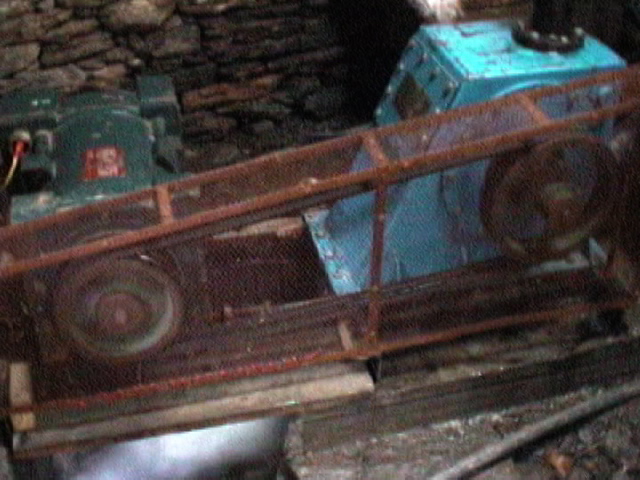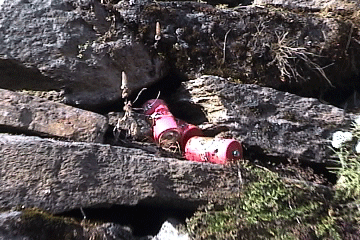


The goal of this Resource Management Plan is to use a variety of measures to correct an unsustainable ecological imbalance caused by population pressure, by transforming the residents' energy use patterns into a low-impact, higher living standard lifestyle that builds ecological and energy equity.
Conservation measures have been first priority tasks in changing the energy equation for the community. Because fuelwood is the most pressing concern, primary attention has been on reducing wood consumption. This was done by introducing a number of home improvements. Small, inexpensive iron woodstoves save one-third the amount of fuelwood burned. Multiplied by 350 homes X 20 years, the conservation savings of the fulewood resource is extremely significant. Residential roofs were also replaced with corrugated metal sheet, and leakage was much reduced allowing residents to again burn less fuel for warmth. The conservation benefit again improves by the same multiplier of 350 homes X 20 years. A reforestation program has been instituted to insure that fuel resources are being replaced. Each year the nuns plant over 4,000 new trees. These conservation measures have all built ecological equity.
The new hydro-electric generator was harnessed to supply power for lighting the new monastery buildings, and should soon be extended to the nuns and monks homes as well. This will have a deep and significant effect on many quality-of-life issues. One of the most pressing concerns is the dramatic negative impact on public health from the use of kerosene for indoor lighting. Electric light has broad and positive benefits to respiratory health, literacy, and cultural survival. This is a primary priority at this time. Load calculations revealed that transmission losses in the power cable delivering electricity from the turbine at the river below the monastery were unacceptable. The volume of power lost in the undersized cable was enough to provide lighting to the entire nuns encampment if it could be captured and used. A new transmission cable was installed so that the entire output of the turbine was available at the top of the hill, and this alone will provide enough power to extend the grid to the nuns homes in the near future.
The sewage situation is a serious problem. Over 700 people's sewage goes directly into the river. This is a public health issue that must be addressed immediately. We must build two large septic tanks, so that one is used while the other is cleaned. There is the potential to process the sludge into useable fertilizer for the reforestation program.
These specific kinds of assists are needed to mitigate the ecological impact of the community, and check its increasing energy demands. These measures are designed to improve public health, education and literacy, preserve traditional Buddhist culture, and ensure the environmental sustainability of the community.
After the energy and conservation issues have been addressed, other conservation and energy use issues can be considered. These include rechargeable batteries, solid waste management, solar cooking, and solar gain architectural practices.
1. The monastery has a new hydroelectric generator as of October, 2003...
2. The communal stoves which are located in the basement of the main building...
3. Rinpoche's presence is an important asset because he empowers the community...
1. Fuelwood usage is the #1 resource issue.
2. Residential roofs are an issue related to wood...



